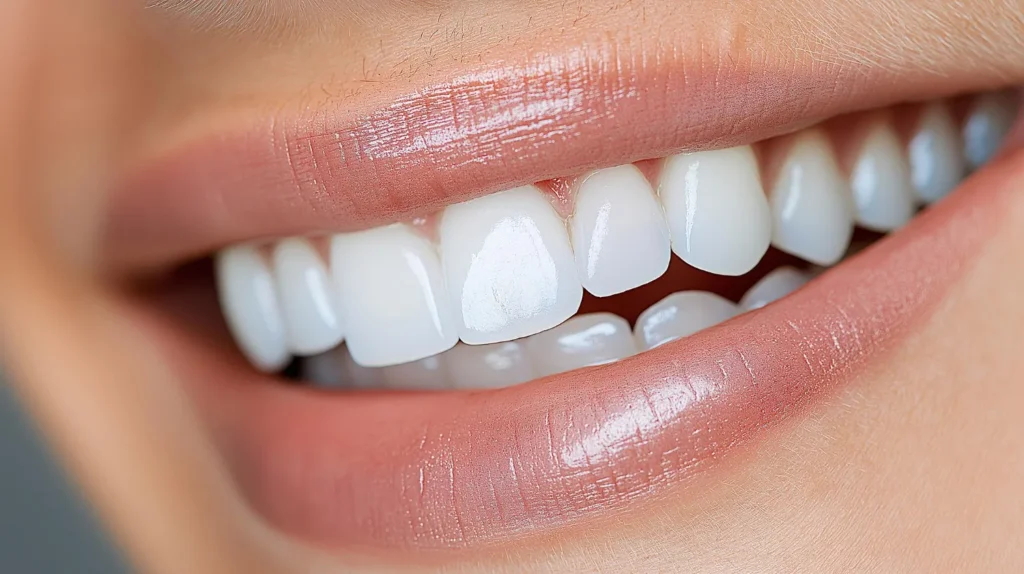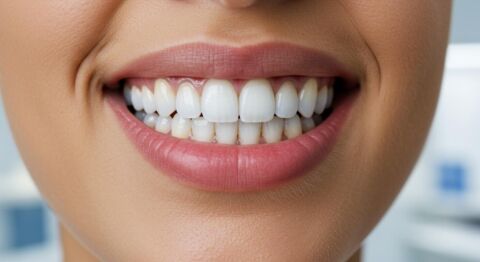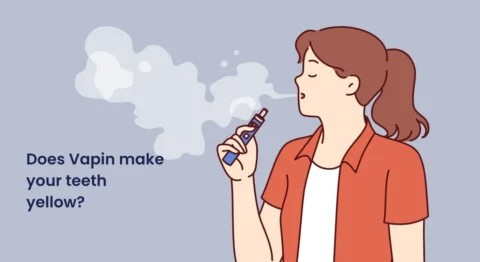Table of Contents
ToggleIntroduction
One of the first things people see in you is a bright, confident smile—and it all works with whiter teeth. Has your coffee, tea, smoking, or simply the normal routine caused your teeth to be dull? You’ll be happy to know that you can have that glossy smile in no time. Here, in a step-by-step guide, we are going to look into all you should know about how to whiten teeth safely and effectively. This guide encompasses all the at-home remedies that have proved effective as well as the professional dental treatments and the daily care tips that can help prevent stains.
Have you ever questioned yourself, what is the best way to whiten teeth? or “How shall I be able to achieve long-term results but not damage my enamel? –You’re in the right place. Continue reading to find out the practical and dentist-tested strategies and natural remedies that are really effective. By the conclusion, you will have the definite idea of making your smile brighter and your confidence higher, without spending time and money on the strategies to make that happen.
1. Understanding Teeth Discoloration
Bright smile is commonly regarded as a symbol of confidence and a healthy state. However, with time a large number of individuals observe their teeth stained or becoming yellow. Being aware of the causes of teeth discoloration can make you make correct steps towards getting a whiter and healthier smile.
Common Causes of Yellow or Stained Teeth
- Food and Drinks (Coffee, Tea, Wine): Foods and drinks of a dark color have pigments that attach to enamel, leaving behind stubborn stains.
- Smoking and Tobacco: Tobacco products contain nicotine and tar, which may leave deep and yellowish or brown stains, which are hard to remove.
- Aging and Enamel Thinning: During old age, enamel decadently breaks away, and the yellowish dentin is seen beneath.
- Poor Oral Hygiene: Irregular brushing and flossing enable the accumulation of plaque and tartar that results in the dullness and discoloration of teeth.
- Genetics: Sometimes tooth color is genetic. In other words, some people naturally tend to have discolored teeth.
Quick Self-Assessment: Could It Be a Bigger Issue?
Tooth discoloration is not all cosmetic. When there are sudden dark spots, grayish stains, and irregular staining, this may be an indicator of cavities and enamel damage, among other dental problems. Under these circumstances, the best thing to do is to see a dentist.
Pro Tip
Stains on teeth are a normal occurrence that can usually be triggered by your daily routine, yet knowing the underlying cause will guide you on whether you require lifestyle modifications, whitening, or professional dental attention.
2. Daily Habits That Keep Teeth White
Achieving a bright smile doesn’t always require expensive treatments—sometimes, it’s about consistent daily habits. By making small but effective changes, you can naturally prevent stains and maintain whiter teeth for years.
Brushing Techniques for Stain Prevention
The way you brush matters. Always use a soft-bristled toothbrush and fluoride toothpaste. Brush in gentle circular motions for at least 2 minutes, twice a day. Avoid scrubbing too hard, as it can damage enamel and make teeth look duller.
Importance of Flossing and Mouthwash
Brushing alone isn’t enough. Flossing daily removes food particles and plaque between teeth that cause discoloration. Follow up with an alcohol-free whitening mouthwash, which helps kill bacteria and freshens breath while reducing surface stains.
Best Foods for Natural Whitening
The food you eat is a big determiner of your bright smile. There are some foods that serve as natural cleaners for teeth, and they include:
- Crunchy fruits and vegetables (apples, carrots, and celery) brush off the plaque.
- Dairy products (milk, yogurt, and cheese)—rich in calcium for stronger, whiter enamel.
- Strawberries and pineapple—this is a natural enzyme that whitens teeth.
Habits to Avoid
Some lifestyle habits can soon work against your whitening:
- Coffee, tea, and soda stain teeth due to dark pigments and acids.
- Two of the quickest ways to leave yellow and brown marks are smoking and tobacco.
- Pleasant treats raise bacterial counts that cause plaque and discoloration.
Pro Tip
To reduce the impact of the stain-causing foods or beverages, rinse your mouth with water as soon as you eat them.
3. At-Home Teeth Whitening Methods
Even without going to the dentist every time, it is possible to have a bright smile. At-home teeth whitening is possible; there are a few safe and effective methods. We will discuss a combination of natural DIY solutions and commercial whitening agents below to help you decide on which solution best fits you.
3.1 DIY Remedies
Baking soda and hydrogen peroxide.
One well-known natural way of whitening the teeth is brushing with baking soda and hydrogen peroxide. It assists in eliminating superficial stains, but when it is overused, it can cause harm to enamel. Use sparingly, not daily.
Oil Pulling with Coconut Oil
Massaging coconut oil in your mouth can kill bacteria and make your mouth healthier. Although it is not a bleaching paste, it makes your teeth remain whiter and fresher.
Apple Cider Vinegar (With Caution)
ACV has been reported to be a great cleaner, yet it is acidic and may erode the enamel in case of overuse. It should always be diluted using water and should be used sparingly.
Whitening Foods
There are foods that naturally aid in whitening. Malic acid is found in strawberries, and it helps to remove stains. Other crunchy fruits, such as apples and pineapples, clean teeth naturally.
3.2 Over-the-Counter Whitening Products
Whitening Strips
It is among the most popular at-home options. They work well and are user-friendly, although they can bring about short-term sensitivity in some users.
Whitening Toothpastes/Mouthwashes.
These operate by eliminating the stains on the surface using mild abrasives. Although the results are slow, they are safe and can be used on a daily basis and aid in maintaining in the long term.
Whitening Pens and Gels
These give the option of targeting individual teeth or areas. They are handy for a last-minute touch-up before events or photos.
Cost Comparison
- Whitening strips: Affordable ($20–$50 per kit).
- Toothpastes/mouthwashes: Very budget-friendly ($5–$15).
- Whitening pens/gels: Mid-range ($15–$30).
Pro Tip
Whitening products used occasionally at home combined with good daily oral care will give long-term effects. When you have sensitive teeth or gum issues, see a dentist first and then use a stronger whitening method.
4. Professional Teeth Whitening Treatments
Professional teeth whitening treatments can be the best option when it comes to getting a brighter, safe smile in the shortest amount of time possible. Compared to home-based remedies or over-the-counter kits, trained professionals in their waking room apply more sophisticated methods and more powerful whitening agents to provide visible outcome.
In-Office Whitening (Laser, Bleaching)
When performed in-office, e.g., laser teeth whitening or professional bleaching, in-office whitening can lighten teeth by several shades in a single treatment. It normally lasts approximately an hour and entails the use of a strong whitening gel, which is triggered by a special light or laser. Although the prices might be high compared to in-home services, the outcomes will be short and long term.
Custom-Fitted Whitening Trays from Dentists
Dentists also have the ability to make your own whitening trays that fit your teeth perfectly. They provide even whitening (compared to generic over-the-counter trays), as well as minimize the chances of irritated gums. You will be given home based formula of whitening gel of professional grade that is said to provide results within 1-2 weeks.
Comparison Professional and Home Remedies.
Although homemade techniques of whitening and over-the-counter possibilities have the slightest effect, professional interventions yield steadier and more impressive outcomes. Professional whitening is the quickest and sure method when one wants their teeth to change in a noticeable way.
Safety and Sensitivity Considerations
It is possible to see in some individuals some tooth sensitivity or gum irritation due to any whitening treatment. Whitening of the teeth by dentists is also fairly safe compared to those carried out without supervision, and dentists pay close attention to these risks to reduce them as much as possible. In case you find yourself having sensitive teeth already, your dentist can suggest an alternative or apply special desensitizing agents over the course of treatment.
Pro Tip
Always consult your dentist before trying any whitening method to ensure it’s safe for your teeth and gums.
5. Teeth Whitening for Special Cases
All teeth whitening procedures do not suit everyone. Age, dental appliances or sensitivity alter what is safe and effective. We are going to discuss whitening options in special cases.
Sensitive Teeth Whitening.
Discomfort when subjected to aggressive whitening treatments may occur in case you have tooth sensitivity. Low-concentration whitening gels, desensitizing toothpaste and fluoride rinses are recommended by the dentists. Always begin with a softer method and see your dentist prior to using harsh whitening items.
Braces or Retainers Whitening.
Braces do not respond well to traditional whitening, as the whitening gel cannot get under the brackets- resulting in uneven whitening. But in the event you wear clear aligners (such as Invisalign), dentists can occasionally apply them as whitening trays. In the case of retainers it is advisable to whiten teeth after having braces on so as to maintain the same outcome.
Taking teeth-whitening pills when you are a child/ teen- Is it safe?
Whitening treatments should not be done to children below the age of 13 because their enamel is yet to mature. Adolescents can apply gentle types of whitening agents such as whitening toothpaste but avoid harsh agents. It is not always advisable that permanent teeth and gums should attain full maturity before professional whitening is done.
Senior Whitening with Thin Enamel.
Enamel also becomes thin as we grow older, and hence, the teeth look more yellow. Regular professional whitening procedures administered by a dentist can be of benefit to seniors. Light whitening toothpastes and preventing the consumption of stain-causing foods also help. Powerful bleaching agents are to be handled with care in order to avoid damaging the enamel.
Pro Tip
Not every whitening method works for everyone. If you have sensitive teeth, choose gentle products. With braces, it’s best to wait until they’re removed for even results. Teens should avoid harsh treatments until their teeth fully mature, while seniors should use dentist-recommended options to protect thin enamel.
6. Common Myths About Teeth Whitening
You may be wearing braces or have sensitive teeth, or you may be of age. There are always myths concerning teeth whitening, but the bottom line is to always consult your dentist first. These might only result in wasted money or even in ruined teeth, which is why you think so. To put the most common misconceptions straight, let us clear up:
Charcoal toothpaste is miraculous.
Myth: Toothpastes made of charcoal make teeth white immediately.
Fact: Charcoal may take away a few surface stains, but there is little or no scientific data to support that it whitens deeply. Excess can even erode enamel, resulting in teeth becoming yellowish in the future.
Whitening damages enamel
Myth: Whitening treatments erode your enamel.
Fact: When used according to the instructions provided by the professionals and dentists, the professional and dentist-approved whitening products are safe. They not only attack enamel but target surface stains. The point is in keeping it within limits and doing as you are told.
Natural remedies are nothing but safe.
Myth: Domestic remedies such as vinegar or lemon juice are not cruel and work well.
Fact: Acidic compounds are capable of actually eroding enamel and making it sensitive. Although certain natural alternatives can prove useful, it should be applied carefully—or not at all.
A single whitening session is an eternal one.
Myth: After they are whitened, your teeth will remain bright forever.
Fact: Whitening does not last forever. The process of staining teeth can be easily reverted to daily habits such as coffee and tea drinking or smoking. Results require regular touch-ups and excellent oral hygiene.
Pro Tip
Teeth whitening is safe and effective when you can distinguish right by fact. Always use methods that are approved by the dentist, and do not use quick fixes that can prove to be harmful.
7. Maintaining Your Bright Smile Long-Term
- Don’t over-whiten—too much can hurt your teeth.
- Brush & floss daily—use whitening toothpaste once or twice a week.
- Watch what you eat/drink—cut down coffee, tea, and wine, and avoid smoking.
- Eat smart—crunchy foods like apples and carrots help clean teeth.
- See your dentist—visit every 6 months for cleaning and safe touch-ups.
Pro Tip
With good hygiene, a smart lifestyle, and professional care, your white smile will last a lot longer.
Good habits = a longer-lasting white smile.
Conclusion
Good daily habits, safe ways to whiten, and frequent dental treatment allow you to have a bright, confident smile. It is consistency and safety in brushing and flossing properly, in testing at-home solutions, and in professional care.
Also keep in mind that whitening is best done slowly and in accordance with your specific needs. Be wary of the myths, and concentrate on those practices that help strengthen your teeth, rather than harm them.
✨ Select what fits your life best, and be sure to ask your dentist in case of doubt.
FAQ's
How long does teeth whitening last?
The results of teeth whitening usually last 6 months to 2 years, depending on your habits. Smoking, coffee, tea, and poor oral hygiene can shorten results, while good dental care helps them last longer.
Can whitening damage gums?
Yes, if whitening gels or strips touch your gums too often, they can cause temporary irritation or sensitivity. That’s why it’s important to apply whitening products carefully and follow the instructions.
What’s the best whitening option for sensitive teeth?
For sensitive teeth, use gentle whitening toothpaste or low-concentration whitening gels. Professional dentists can also provide safe, customized solutions that avoid discomfort while still brightening your smile.
Is professional whitening better than home remedies?
Professional whitening is usually faster, longer-lasting, and safer because it’s done under dental supervision. However, home remedies and over-the-counter products can work well for mild discoloration if used consistently and correctly.



